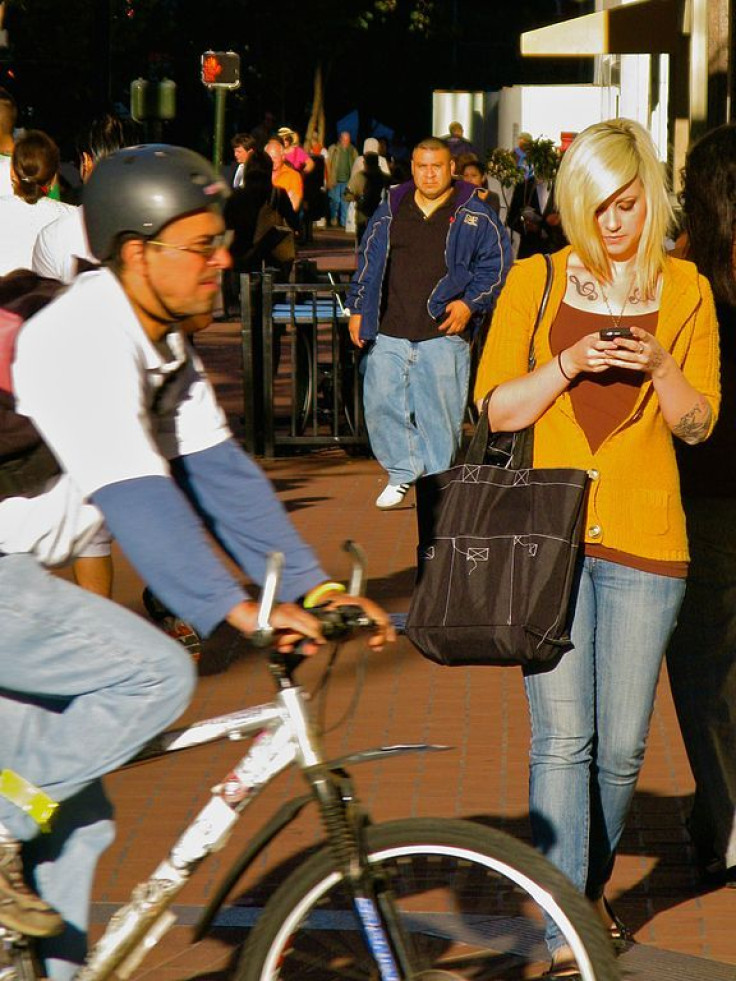Driving While On The Phone Is About As Dangerous As Walking While Using the Internet

If the number of cell phone owners has grown since 1988 and if 81 percent of cell phone owners use their phones while driving, then why has the number of car crashes fallen during this period?
That’s the key question posed by researchers from Carnegie Mellon University and the London School of Economics. Noting that the average amount of time spent talking on a cell phone has risen dramatically since 1993 — from 140 to 740 minutes a month — the authors decided to investigate.
What they discovered will come as no surprise to most.
Review
Noting that researchers have conducted no less than 125 studies in the past few years — devoted to investigating a possible link between cell phone use and car crashes — the authors pointed to a particular paper published in the New England Journal of Medicine that concluded “cell phones increase the relative likelihood of a crash by a factor of 4.3.” Categorizing the bulk of these published studies, the authors saw that past research has utilized four basic methods to understand the link between car crashes and cell phone use: simulated driving conditions, naturalistic studies of drivers on real roads, analysis of data contained in crash records, and longitudinal analysis of data about individuals and crash records. Further exploring the topic, they cited popular opinion: nearly 80 percent of Americans believe that talking on a cell phone while driving should be banned, according to a New York Times/CBS News survey, the authors noted.
For their own study, the authors discovered their own approach — namely, to examine the data of car crashes during the years 2002 to 2005, when a number of cell phone plans offered a marginal price drop for phone calls made after 9 p.m. on weekdays. Assuming the number of driving phone callers would be larger after 9 p.m., did the number of car crashes also rise?
Well, yes. But not as much as previous research on the matter would suggest.
Walking And Talking
“Our estimates of the relative rise in crashes and call likelihood at 9 pm imply a 3.0 upper bound in the crash risk odds ratio…,” the authors wrote. “The analysis further suggests that cellular use is not analogous to drunk driving as some policymakers and academics have averred.” Although it may do so by a smaller percentage than previously thought, talking on a phone while driving increases the risk of having an accident. In short, driving and cell phones still don’t mix.
So what about walking and talking on a phone? Walking while texting? Walking while using any mobile device? Researchers at the University of Alabama decided to investigate the nature of that relationship.
The authors began with two observations, namely that cell phone use has increased exponentially in recent years and that college-age individuals have the highest incidence of pedestrian injuries compared to other adult age groups. Is an elevated risk of injury within this group caused by distraction, in particular the kind that comes from paying attention to a mobile device?
Researchers designed a study for 92 participants, in which each participant crossed a ‘virtual’ street 20 times, 10 times undistracted and 10 times while completing a "scavenger hunt" on the Internet using their cell phones.
The researchers found that, while in the virtual street environment, the behavior of participants was generally more risky if they were distracted. While on the Internet, participants waited longer to cross the street, missed more safe opportunities to cross, took longer to initiate crossing when a safe gap was available, looked left and right less often, spent more time looking away from the road, and were more likely to be hit or almost hit by an oncoming vehicle.
Additionally, the participants reported that this was not an uncommon experience as they frequently used the Internet on their phones, including while walking across streets.
“Pedestrian behavior was influenced, and generally considerably riskier, when participants were simultaneously using mobile Internet and crossing the street than when crossing the street with no distraction,” the authors wrote. “This finding reinforces the need for increased awareness concerning the risks of distracted pedestrian behavior.”
Sources: Bhargava S, Pathania VS. Driving under the (Cellular) Influence. American Economic Journal: Economic Policy. 2013.
Byington KW, Schwebel DC. Effects of mobile Internet use on college student pedestrian injury risk. Accident Analysis & Prevention. 2013.



























